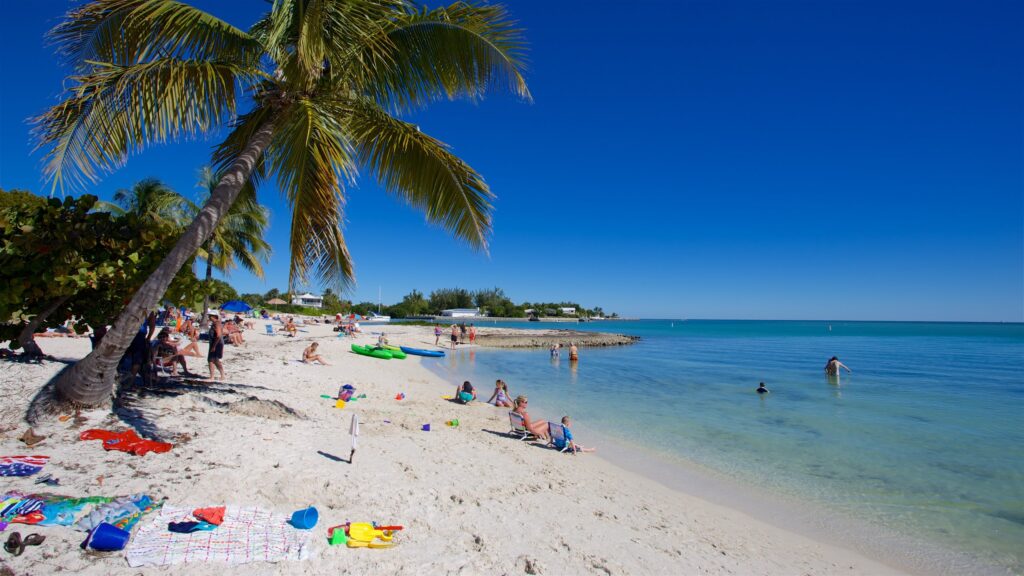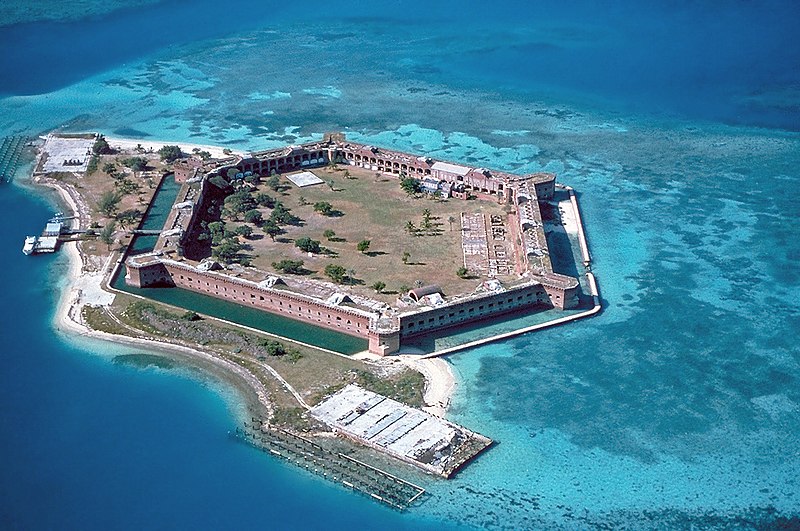
Before I go on vacation or to someplace new, I always like to learn a little bit about the area – the history of the area, the geography, and what there is to do. This is where you get the benefit of me being a nerd that likes to learn and do research. Since Kathy is out living her best retired life, we are stuck back at home reading about it. So while we are jealous that Kathy is someplace that is 80 degrees and sunny, we can learn a little and be happy that someone we know is enjoying her new chapter in life.
So what is Key West besides a nice little island in the ocean? Curious minds want to know. The Florida Keys are actually made of 1700 little islands in a chain stretching from Miami, Florida going southwest towards Cuba in the Florida Keys National Marine Sanctuary. 800 of these islands are actually keys. What is the difference between a key and an island, you ask? Keys are limestone-based islands created through low-lying coral build up. So, all keys are islands but not all islands are keys.

There are 5 regions of the Florida Keys going from North to South. These regions are known as Key Largo, Islamorada, Marathon, the Lower Keys, and Key West. You can get to the Keys a couple of different ways. The quickest way is to get there is to fly directly to the Key West International Airport. You could go by boat, providing you have a yacht and a good captain. Probably the most scenic way is to fly into Miami International Airport, rent a car, and enjoy the leisurely drive to Key West. The Overseas Highway is the road you want. Follow the mile markers to zero and you are there. The edge of Miami – Dade County is at mile marker 113 and signals that you are leaving the Florida Mainland.

The Upper Keys: Key Largo is the northernmost of the Florida Keys and is knows for it’s stunning coral reefs and easy access to nature. The upper keys are the home of the Everglades National Park. Key Largo is often considered the diving and snorkeling center of the Florida Keys and is about one hour from Miami.

The next section of the upper keys is a collection of about six different Keys: Plantation Key, Windley Key, Upper Matecumbe Key, Lower Matecumbe Key, Indian Key and Lignumvitae Key. This section of the upper keys is considered to be the sport-fishing capital of Florida and is about 90 minutes from Miami. Charter fishing trip anyone?

The Middle Keys: The middle keys is a perfect destination for families made of 13 small keys from Vaca Key to Long Pine Key . The middle keys are known for many vacation rentals and lodging options that are close to the idyllic Sombrerro Beach and many other dog friendly beaches. The middle keys are about 2 1/2 hours from Miami. When you reach the seven-mile bridge, you know that you are about to enter the lower keys.

The Lower Keys: The Lower Keys officially begin at the Seven Mile Bridge. By the time you get to Key West, the southernmost point of the United States, you are closer to Cuba than Miami. The Lower Keys range from Buhia Honda Key, Key West, and the Dry Tortugas.

Key West is known for the street performers, lively night life on Duvall St., epic sun sets, and for being the home of many authors and music superstars. There are many things to do in Key West. You could chill out in Mallory Square. Mallory Square is known for it’s sunset celebrations, many restaurants, street performers, shopping, and an open-air sculpture garden. If you have a passion for Jimmy Buffett and all things Margheritaville, a walking tour is the best way to find the locations around Old Key West that inspired his songs. The tour will take you to the place of his first gig, his favorite watering holes, bars where he performed, and his old recording studio. Another attraction is the Ernest Hemingway home and museum. Ernest Hemingway was a Pulitzer and Nobel Prize Winning Author of books such as “The Old Man and the Sea”, “The Sun Also Rises”, and “Farewell to Arms”. The Hemingway House not only a National Historic Landmark but is also a Literary Landmark, recorded at the Library of Congress as a Historic American Building. Duvall St runs from the Atlantic Ocean to the Gulf of Mexico and is Old Town Key West’s main strip. You will find a mix of restaurants, bars, boutiques, theaters, and Kitschy souvenir shops. Duvall St is also home to some of the wildest pub crawls in the United States.

If you like to visit National parks, I strongly urge you to visit the Dry Tortugas National Park. The Dry Tortugas is truly a tropical paradise with it’s crystal clear waters, sandy beaches, and coral reefs. Dominated by Fort Jefferson, a massive fort built to protect the entrance to the Gulf of Mexico, the park invites you to kick off your shoes, snorkel the vivid coral reefs, and learn about the turbulent past of the series of islands 70 miles from key west. Fort Jefferson offered ships traveling through the Florida Straights and Gulf of Mexico a chance to resupply, refit, or refuge from storms. The location, one of the world’s busiest shipping lanes, made the Tortugas a great military asset. The building of the fort began in 1846 and was used mainly as a prison during the Civil War to house Union deserters. The most notorious prisoner was Dr. Samuel Mudd, the doctor who set the broken leg of John Wilkes Booth. He was incarcerated for collaborating with Booth concerning the assassination of President Abraham Lincoln. The Dry Tortugas were first discovered by Ponce de Leon, the famous Spaniard explorer looking for the fountain of youth. Ponce de Leon named the island “LA Isla de tortugas” (or the island of turtles) because of the abundant turtle population. Mariners later added the word “Dry” since the only source of drinking water was from rain puddles. This National Park is situated at the southwest corner of the Florida Keys reef system, the third largest in the world.
